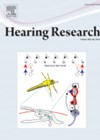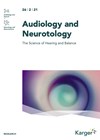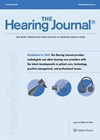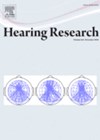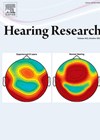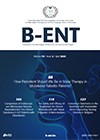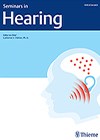
Journal Reviews
Keep on moving
This study compared the differences in localisation of sound between those with symmetrical hearing within normal limits (NH) and those with single-sided deafness (SSD). Unsurprisingly, those with SSD took longer to localise sounds and had a higher error rate. Although...
The cocktail party conundrum
I feel, with slight sadness and disappointment, that a good cocktail party, dresses, punch bowls and all is not currently in its heyday and, therefore, opportunity of attending is slim. However, from what I remember, they tend to be a...
Expectations and practice
Reading this paper is reassuring. It does not appear to be groundbreaking in its results but research can be as useful, if not more so, when it consolidates knowledge and helps unify the research base. This paper focuses on those...
Not to be mis-underestimated
It is a very rare occurrence to find a paper looking at NF2 and the auditory system. There seems to only be a couple on NF2 prevalence in the population, so this is unsurprising. As far as I can recall...
Current AI audiology knowledge
Artificial intelligence (AI) tools are becoming increasingly popular and can be utilised by patients, healthcare professionals and students. The performance of chatbots can be variable between different AIs and, indeed, different topics. There is no current consensus for the best...
Help seeking for tinnitus – experiences of the diagnostic and treatment process
Population-based and self-selecting adult participants of this Australian cohort study (n=281) completed survey questions exploring varied outcome measures related to tinnitus. Primary outcomes assessed communication of initial tinnitus diagnoses and subsequent treatment offering, with participants rating their satisfaction at the...
Case study suggesting mtDNA mutation as a tinnitus factor: ND1:m.3394T>C
Konadath et al report a genetic case study of a 24-year-old female experiencing reduced hearing sensitivity and tinnitus along with a blocked sensation in her right ear, sudden onset one year prior with no other otological complaints. Standard audiometry along...
Audiological decision-making in a complex bimodal case of adult congenital atresia
The authors describe a clinical case of a 65-year-old man with left congenital atresia who, as an adult, developed hearing loss in his right (better) ear and subsequently began seeking audiological intervention for hearing difficulties. Their client’s unique case history...
Tinnitus without hearing loss – inflammation?
Inflammation can have a profound impact on multiple systems. Certainly in recent years, autoimmune conditions are on the rise and the impact on audiovestibular symptoms have been documented. Given the rates in the population, the impact of inflammation on the...
Where is it?
Humans’ ability to process sound is a multi-faceted phenomenon. It is a marvel which likely changes through our ageing process and is influenced by a myriad of factors. This paper examines the particulars of the dimensions of sound processing –...
Systemic steroids for sensorineural hearing loss
This Japanese retrospective study looked at whether the dosage of prednisolone affects the response rate in patients with idiopathic sudden sensorineural hearing loss. The authors included a total of 159 patients over a 14-year period who were treated with 200mg/day...
Not to be underestimated
Equipment may differ, formulas and hearing aids alter, but I am in agreement with what this article points out: the test box can be considered a vastly under-used and under-appreciated piece of equipment. It can provide an alternative verification for...



